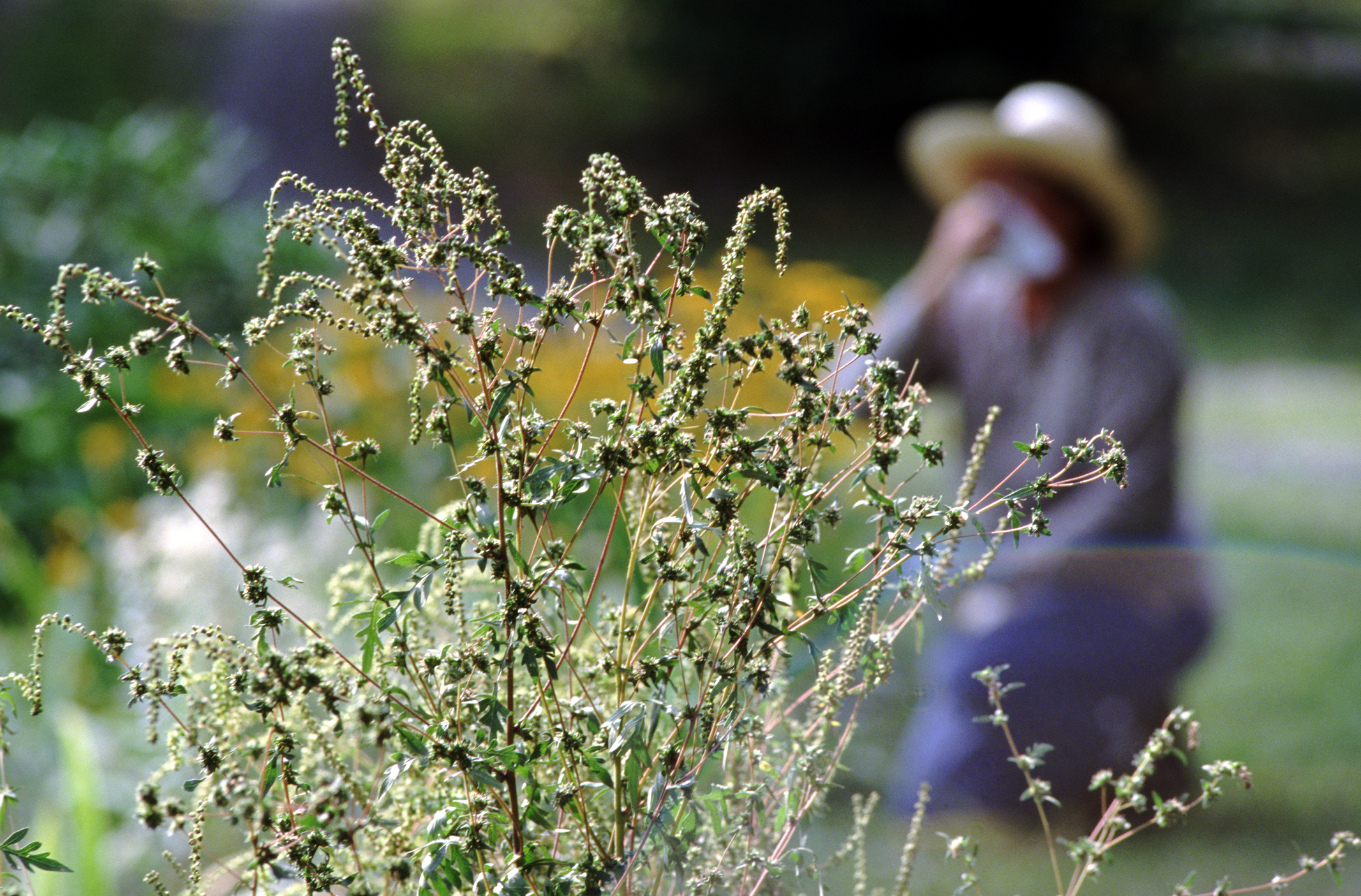
Millions of Americans spend weeks each year sneezing and sniffling due to allergies to seasonal triggers such as tree, grass, or ragweed pollen. And for the subset of people who are allergic to year-round household irritants like dust mites, mold, and cockroaches, any season can turn into allergy season.
Allergy symptoms happen when your immune system interprets what should be a relatively benign substance as a threat. The severity of symptoms and the difficulty of treating them can vary depending on your genes, how many substances you’re allergic to, and your level of exposure, says Dr. H. James Wedner, an allergy and immunology specialist at Washington University in St. Louis.
For many people with mild symptoms, the misery of seasonal or environmental allergies can be tamed by over-the-counter medications—but for others, all the pills and nasal sprays in the world don’t seem to make a difference. Some allergy sufferers genuinely don’t respond to treatment, and researchers are still studying why that is, Wedner says. But others may be able to find relief with the right remedy.
“I feel like we normalize allergies” to the point that people think they have to live with them, says Dr. Caroline Sokol, principal investigator at Massachusetts General Hospital’s Center for Immunology and Inflammatory Diseases. But “we have tools in our belt to actually help people.” Here’s what has the best efficacy, and what’s on the horizon.
Antihistamines and corticosteroids
For many people, antihistamines (which block the effects of a chemical created by your immune system) and/or corticosteroids (anti-inflammatory drugs) are enough to get allergies under control. These drugs can be administered orally or through nasal sprays, and are typically available in over-the-counter and prescription-strength forms.
Wedner recommends introducing medications several weeks before peak allergy season to blunt symptoms before they start. It’s also important to take these drugs exactly as directed. Sokol notes that some sprays take about a week to work.
If your medication isn’t effective, you may not be using the right one. Antihistamines are great for symptoms like itchy eyes, Sokol says, but corticosteroids are better for congestion. You may need to mix and match to find the right regimen for your symptoms.
Environmental control
“Nobody’s allergic to something that isn’t there,” Wedner says, so decreasing allergen exposure is sometimes the best way to ease symptoms (though it’s often easier said than done). Mite-blocking encasements for bedding can be helpful for those with dust allergies, Sokol says, and replacing carpet with tile or hardwood can eliminate hiding places for allergens. HEPA air filtration systems can also help, she says, as long as they’re the right size for your space.
Pet allergies can be the hardest to manage through source control, Wedner says, because pet owners often refuse to rehome their animals even if they’re allergic to them. For years, Wedner’s lab tried to reduce the allergenicity of cats by washing them, something that wasn’t terribly effective and that both people and cats hated, he says. That effort didn’t pan out, but his team recently tested a specialty food that neutralizes allergens in cat saliva—which spread to cats’ coats while they clean themselves—and found it to be effective. Keeping pets out of your bedroom can also reduce symptoms, Sokol adds.
Immunotherapy
People with chronic environmental allergies may want to try immunotherapy, which gradually acclimates the body to allergens through a series of injections. It’s “one of the few ways that we as physicians can actually change your immune system,” Wedner says. But immunotherapy is not a quick-and-easy solution. It requires weekly shots for about six months, followed by years of less-frequent maintenance shots.
Studies show that about 85% of people get at least some relief from immunotherapy, but some patients eventually relapse and others don’t respond at all. Researchers aren’t totally sure why, but it’s likely in part because there is no commercially available test to determine exactly which protein within an allergen is causing someone’s symptoms, says Dr. Gabriele de Vos, an associate professor of allergy and immunology at Albert Einstein College of Medicine in New York City.
“Even if you have 10 people who all have dust-mite allergies,” de Vos says, “their allergies may be very different.”
Without granular testing, it’s impossible to create an individually tailored immunotherapy regimen, de Vos explains. Such tests are in development, but it’s not clear if or when they’ll be used clinically, de Vos says.
Immunotherapy using pills that dissolve under the tongue, instead of shots, is now available for dust-mite and grass allergies, and studies have shown that this method can be effective. The caveat, Sokol says, is that people who are allergic to many things may still experience symptoms, since the pills are specific to dust or grass. Research has also shown that injecting allergens directly into the lymph nodes can be effective.
Biologics
Biologics—protein-based drugs that, in the case of allergies, neutralize parts of the immune system that cause inflammation—are an up-and-coming treatment option. These drugs could be used to promote “long-term tolerance to our environment,” or in conjunction with allergy shots to speed up their efficacy, Sokol says. Biologics are still the subject of active research, but some can already be prescribed to patients who need something stronger than over-the-counter treatments.
More Must-Reads from TIME
- Cybersecurity Experts Are Sounding the Alarm on DOGE
- Meet the 2025 Women of the Year
- The Harsh Truth About Disability Inclusion
- Why Do More Young Adults Have Cancer?
- Colman Domingo Leads With Radical Love
- How to Get Better at Doing Things Alone
- Michelle Zauner Stares Down the Darkness
Write to Jamie Ducharme at jamie.ducharme@time.com